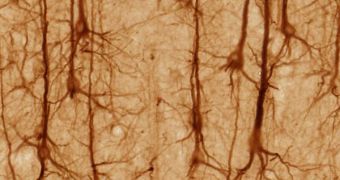Often labeled as one of the most ambitious projects in the world, the Blue Brain initiative was started in 2005 with the purpose of constructing an artificial brain. Through that, its creators understand constructing an accurate replica of the way our minds work that could be used in studying mental conditions in the future. The project's Director, Henry Markram, announced recently at the TED Global conference, held in Oxford, that the initiative would yield conclusive results within a decade. If all went well, he said, a hologram would inform attendants in ten years' time of the accomplishment.
His optimistic tone was drawn from the fact that the BBP had already managed to mimic parts of the rat brain in their complexity, which means that groundwork for creating a human one is already set. The reason why the team worked so hard for this purpose, the expert said, was the fact that an estimated two billion people around the world suffered from one or more forms of mental impairment at the moment. Therefore, research into the symptoms, causes and manifestations of such conditions need to be carefully analyzed and understood.
“It is not impossible to build a human brain and we can do it in 10 years. And if we do succeed, we will send a hologram to TED to talk,” he stated at the conference, the BBC News reports. The way the team plans on doing that is by reverse-engineering it from the vast amounts of laboratory data that were collected through thousands of studies throughout the years. Their efforts are concentrated at this point mostly on the neocortical column, a relatively recently developed part of the brain.
“It's a new brain. The mammals needed it because they had to cope with parenthood, social interactions complex cognitive functions. It was so successful an evolution from mouse to man it expanded about a thousand fold in terms of the numbers of units to produce this almost frightening organ. It is evolving at an enormous speed,” Markram added. “It's a bit like going and cataloguing a bit of the rainforest – how may [sic.] trees does it have, what shape are the trees, how many of each type of tree[s] do we have, what is the position of the trees. But it is a bit more than cataloging because you have to describe and discover all the rules of communication, the rules of connectivity,” he explained about the brain's complexity.
The end-goal of the BBP, as futuristic as it may sound, is to understand how the human brain perceives the world, and where that perception is distorted. The engineers imagine showing the artificial brain a flower, and observing how the construct creates a representation of the object, and turns it into abstract concepts. Gaining such an ability would put the human race at a superior level, some believe.

 14 DAY TRIAL //
14 DAY TRIAL //